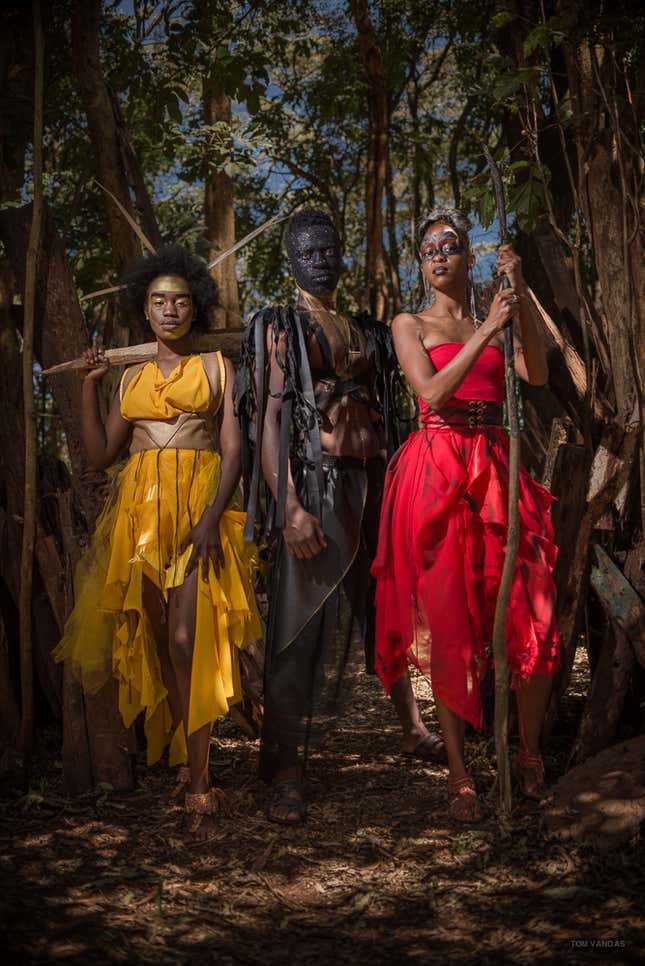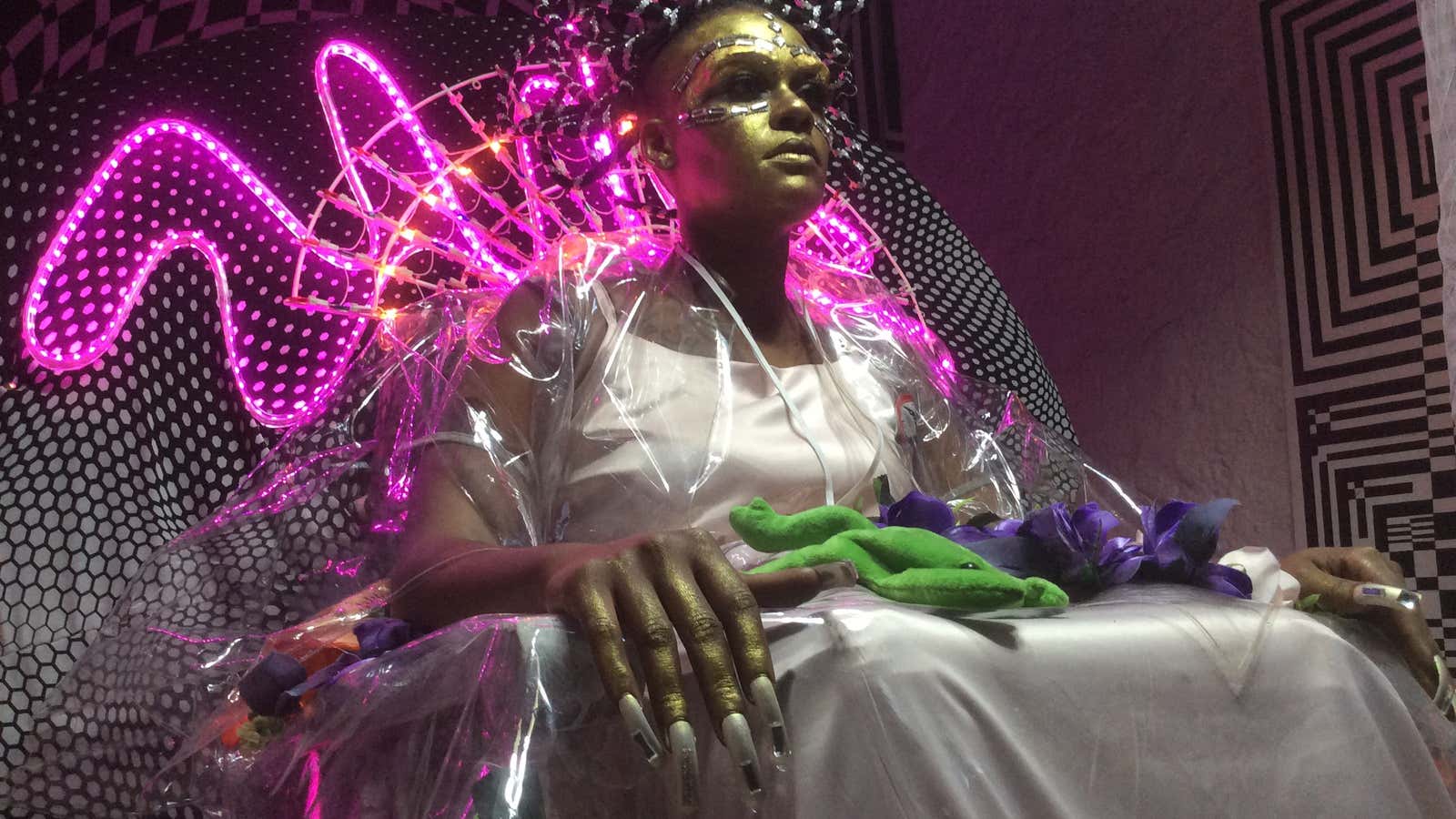Two women and a man wrangle over fruits in Nairobi Berries, each one emptying the other’s core, while a poetic voice speaks over layered images of the Kenyan city. In The Other Dakar, a young girl receives a message and finds the hidden face of the Senegalese capital. In the Spirit Robot documentary, the Chale Wote Street Art Festival in Accra comes to life. And in Let This Be a Warning, a group of Africans is concerned about the arrival of an unbidden guest in their colony, raising a weighty question at the end of the film: “If black worlds exist(ed), would you be welcome in them?”
These short films, which were recently showcased at the German cultural center in Nairobi, share one trait: they are all virtual reality productions. They are stunning visual debuts from four African directors representing three countries, namely Ng’endo Mukii (Kenya), Selly Raby Kane (Senegal), Jonathan Dotse (Ghana), and Jim Chuchu (Kenya), respectively.
Across the world, virtual reality (VR) has gained new currency in the entertainment, gaming, and even journalism industries, generating billions of dollars in revenue. The technology is also slowly making inroads into the mainstream film community, with directors embracing VR to make immersive experiences that draw more audiences.
The Virtual Arcade at the 2016 Tribeca Film Festival is an exemplar of that, showcasing virtual films that tackled climate change, the struggle of a mother in Gaza following her children’s death, and the search for the kanju spirit—“creativity born of struggle”—across Africa. At the Cannes Film Festival, organizers for the first time this year included a virtual reality project by the Oscar-winning Mexican director Alejandro Iñárritu in the official selection.
In many African markets, music and movie sales are undermined by rampant piracy and artists’ work is often used without permission or payment. This means virtual reality presents filmmakers with the opportunity to market movies directly to those who already own equipment or who can’t see the films unless they attend launches or special exhibits. These VR movies also push the boundaries of filmmaking in the continent, increasing its chances of breaking into the international market.
And in this quest to reinvent cinematic practices, African filmmakers are now saying that VR could give them an opportunity to both complement and push the traditional fold of African storytelling and dispel pervasive stereotypes about the continent. The nascent adoption of the technology in filmmaking globally, directors say, also creates a level playing field that gives them an equal chance of succeeding.
“For the first time, technology has caught up with African storytelling,” Jepchumba, a Kenyan digital artist, said during the screening of the films in Nairobi. “The onus is on us now.”

South Africa currently leads the efforts to use VR in the African continent, with the technology being applied in both filmmaking and advertising. The Cape Town-based non-profit Electric South also provides funding and training to creative teams producing virtual reality films across the continent, besides curating interactive exhibitions.
Yet despite the excitement surrounding the VR industry, challenges—some traditional, some new—persist. For instance, directors have spoken about grappling with how to get access to equipment, and then navigating, setting up, and using the new technology. Fixed frame movies also allow directors control over the set, but the all-seeing angles of VR gear mean actors have to be left alone on the set. Chuchu, who directed Let This Be a Warning says it felt like being “a theater director, rehearsing the scenes until the actors felt comfortable, and then leaving them to their own devices.”

Virtual reality productions would also struggle to find a foothold in the continent owing to some of the same difficulties facing African cinema. These barriers include low funding, poor distribution networks, lack of screening technologies, piracy, and viewers disposed towards Hollywood blockbuster movies. Chuchu says that these hurdles might impede the growth of VR as a transformative tool in African storytelling.
But George Gachara, a managing partner at the creative fund Heva, says it’s only a matter of time before the technology gains traction among consumers. In Africa, VR is already flourishing in the gaming industry, is being used to sell property, and is being explored as a tool for education. Once these value chains are created, Gachara says the challenge will be about how much we can excel in adapting VR technology in the creative industry and beyond.
“The question then will be: Are we innovating, dreaming, thinking, and pushing boundaries?”
